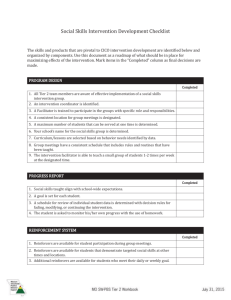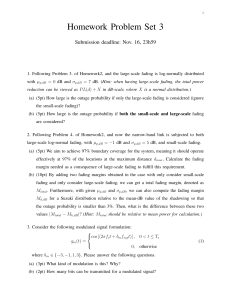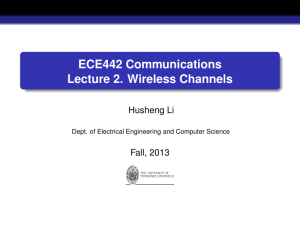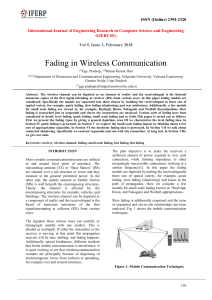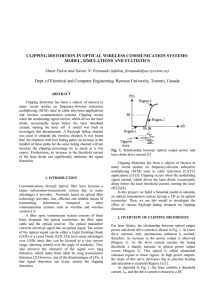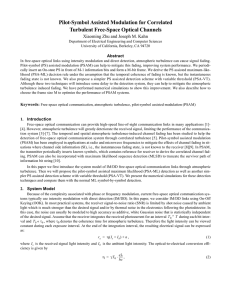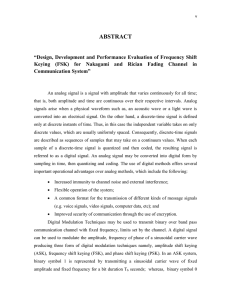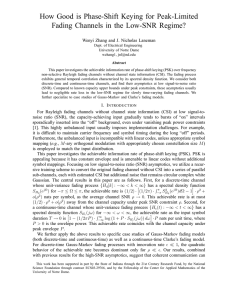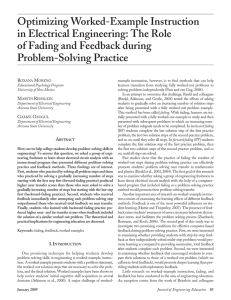WIP: Effectiveness of Worked Examples and Fading in Introductory Electrical Circuit
advertisement
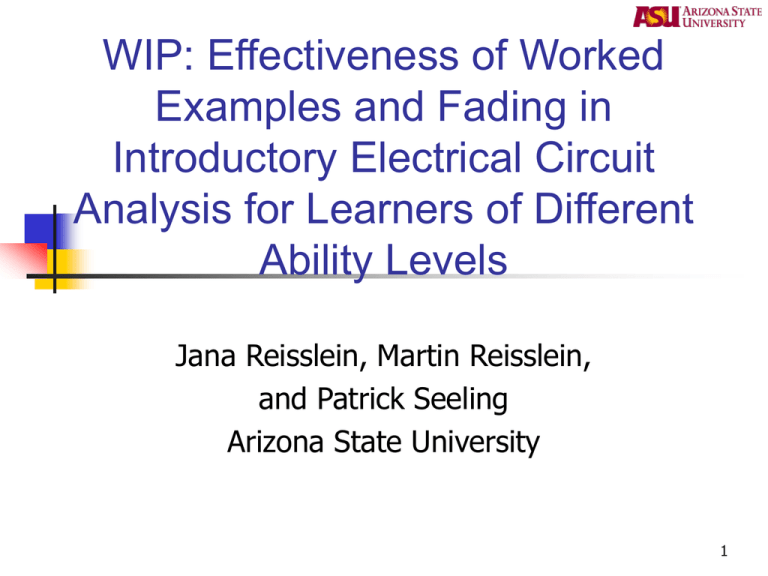
WIP: Effectiveness of Worked Examples and Fading in Introductory Electrical Circuit Analysis for Learners of Different Ability Levels Jana Reisslein, Martin Reisslein, and Patrick Seeling Arizona State University 1 Worked Example: Definition and Benefits Components of a worked example: 1. 2. 3. Problem statement Individual solution steps Statement of final solution How can they be effective in advancing skill acquisition? Actively process WE, scaffolding, provide opportunities for practice Advance to independently solve problems 2 Fading Smooth transitioning from studying WE to independent problem solving Backward fading 1. 2. 3. 4. 5. Fully worked example Learner attempts last solution step Lerner attempts last two solution steps … Learner independently solves problem Instructional feedback on solution attempts, demonstrated how to solve correctly 3 Related Research Investigated fading with social science students in domain of probability theory Considered only fading designs with one fixed pace of fading, i.e., one more solution step to solve per problem This research: Conducted with engineering students in domain of electrical circuit analysis Considers different paces of fading/ adaptive fading 4 Example-Problem, Prob.-Ex., & Fading Example-problem pairs: worked example => practice problem Problem-example pairs: Practice problem => worked example Ability by instructional sequ. interaction Prob.-Ex., fading: high-prior know. learners outperform low-prior know. learners Ex.-prob.: low-prior know. learners outperform high-prior know. learners Worked example, expertise reversal effects Important to consider level of prior know. 5 Different Static Paces of Fading 6 Adaptive Fading 7 Conclusion Level of prior knowledge and ability of learners needs to be considered in instructional design Developed novel fading designs Provide effective worked example based instruction for engineering Future research: learner interaction, role of feedback, increasing germane cognitive load 8


